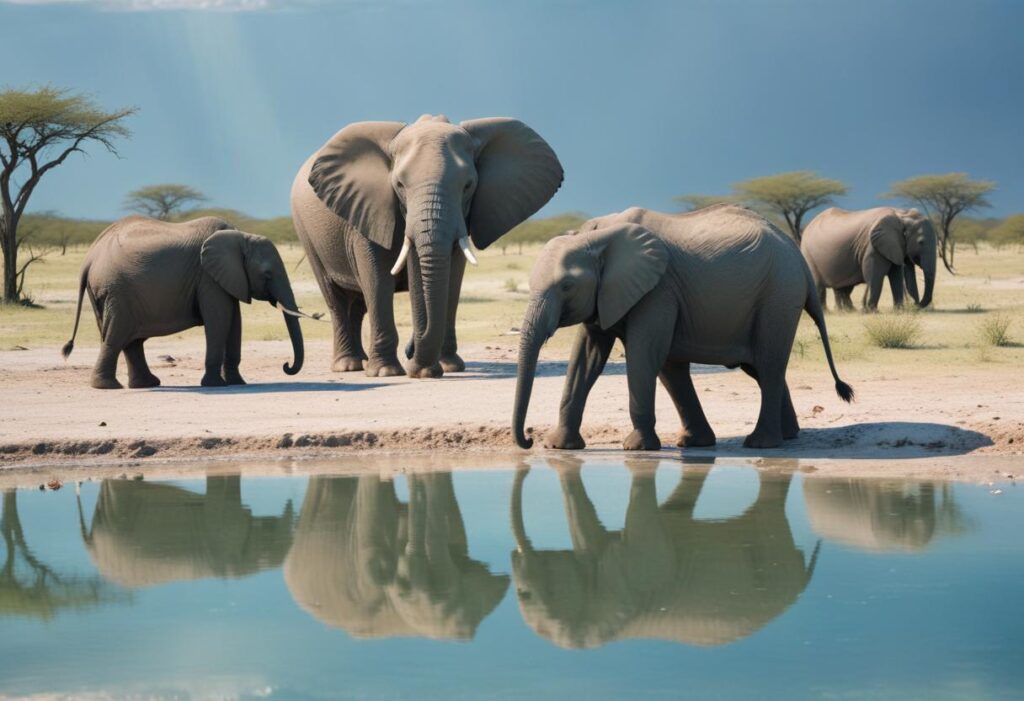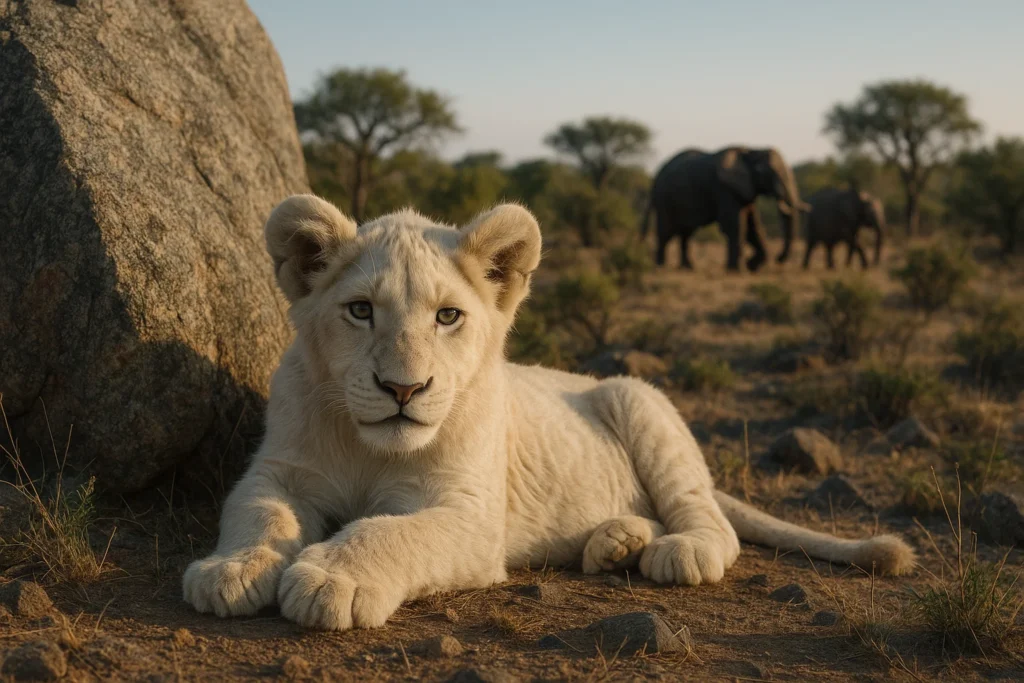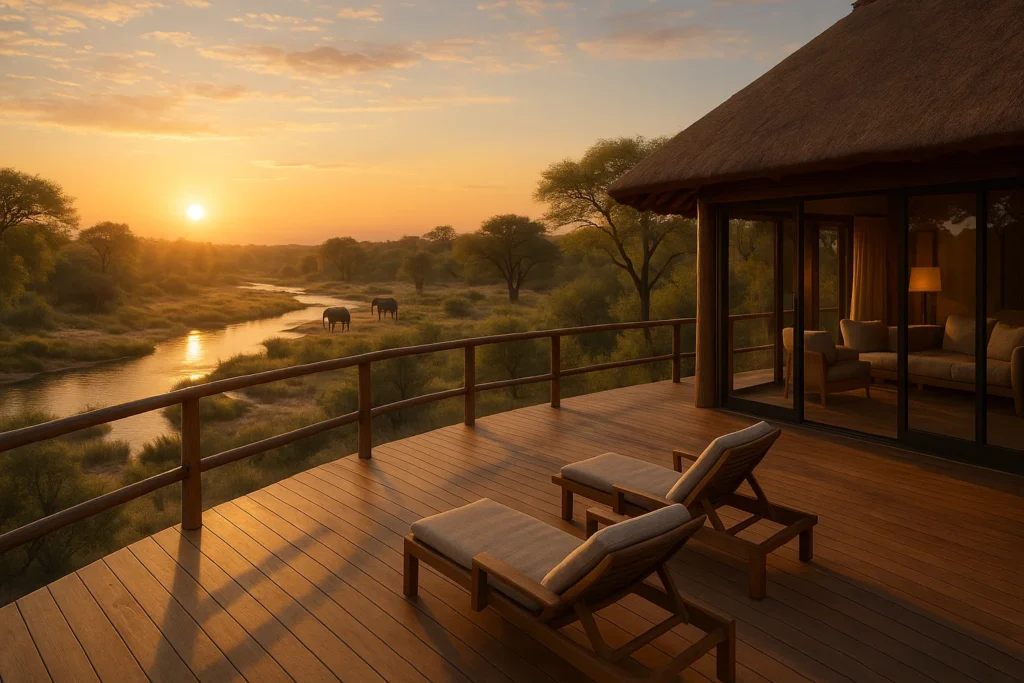Etosha National Park is a year-round safari destination, but every month brings something unique—whether it’s dramatic wildlife at waterholes, spectacular bird migrations, or discounted lodge rates. In this guide, we break down Etosha’s seasons month by month, looking at wildlife activity, weather, visitor numbers, and price trends to help you plan the perfect trip.
Quick overview: Etosha’s safari seasons
Etosha has two main seasons:
- Dry Season (May to October): Peak wildlife viewing, minimal rainfall, high visibility
- Wet Season (November to April): Lush landscapes, bird migrations, fewer tourists
Let’s dive deeper into each month.
January
- Climate: Hot and humid, with afternoon thunderstorms
- Wildlife: Green and scenic; many animals have young; fewer sightings at waterholes
- Birding: Excellent—migrants like bee-eaters, waders, and flamingos at Fischer’s Pan
- Crowds & Prices: Low season—great deals and fewer vehicles
Verdict: Best for birdwatchers and photographers who love dramatic skies.
February
- Climate: Still rainy, though storms are shorter and more isolated
- Wildlife: Calving season; predators active but harder to spot in thick vegetation
- Birding: Superb
- Crowds & Prices: Very quiet, with low accommodation rates
Verdict: Peaceful, green, and ideal for an off-peak photographic safari.
March
- Climate: Rains taper off; days start cooling slightly
- Wildlife: Game is still dispersed, but road conditions improve
- Birding: Still strong but starting to wane
- Crowds & Prices: Quiet, with mid to low pricing
Verdict: A transition month—still lush, but increasingly accessible.
April
- Climate: Drying out; cooler mornings and evenings
- Wildlife: Animals start moving toward waterholes
- Landscape: Stunning post-rain greenery
- Crowds & Prices: Shoulder season; good value
Verdict: Excellent balance of scenery and affordability.
May
- Climate: Beginning of the dry season; crisp mornings, dry days
- Wildlife: Animals concentrate near waterholes; sightings improve
- Crowds & Prices: Still relatively low, but increasing
Verdict: A fantastic time for first-timers—wildlife is back in full swing.
June
- Climate: Dry and cool; perfect safari temperatures
- Wildlife: Great visibility; animals active throughout the day
- Crowds & Prices: Start of high season—book early
Verdict: One of the best all-round months for game viewing.
July
- Climate: Peak dry season; chilly mornings, warm days
- Wildlife: Outstanding sightings at waterholes
- Crowds & Prices: High; camps are often full
Verdict: Prime time for photographers and wildlife lovers, but plan ahead.
August
- Climate: Similar to July; dry and dusty
- Wildlife: Spectacular predator activity around permanent water sources
- Crowds & Prices: Very high; Etosha is at capacity
Verdict: Peak safari experience—just be ready for busy viewpoints.
September
- Climate: Dry and hot; temperatures rising
- Wildlife: Wildlife densities at waterholes reach their peak
- Crowds & Prices: Still high but tapering late in the month
Verdict: Arguably the best wildlife viewing month in Etosha.
October
- Climate: Hot and dry, with occasional early rains
- Wildlife: Intense activity as animals compete for water
- Crowds & Prices: Begins to drop mid-month
Verdict: A dramatic, dusty finale to the dry season.
November
- Climate: First proper rains arrive; still hot
- Wildlife: Disperses quickly as pans begin to fill
- Birding: Migrants return
- Crowds & Prices: Quiet, with excellent value
Verdict: Great for photography, fewer people, and changing scenery.
December
- Climate: Warm and rainy, especially afternoons
- Wildlife: Young animals born; predators follow
- Birding: Picks up again with more migrants
- Crowds & Prices: Festive bump in late December
Verdict: A lush, lively time with dynamic skies—best for seasoned safari-goers.
Conclusion
There’s no bad time to visit Etosha—but the best time depends on your priorities. For unbeatable wildlife sightings, come between June and September. If you want peace, savings, and greenery, consider April or November. Each season reveals a different side of Etosha—and all are worth experiencing.
Frequently Asked Questions (FAQs)
January to March offer the lowest prices, especially at park camps and local lodges.
April, May, and November balance wildlife, accessibility, and lower visitor numbers.
January typically sees the heaviest rainfall.
Yes, especially for birding, calving season, and dramatic photography.






